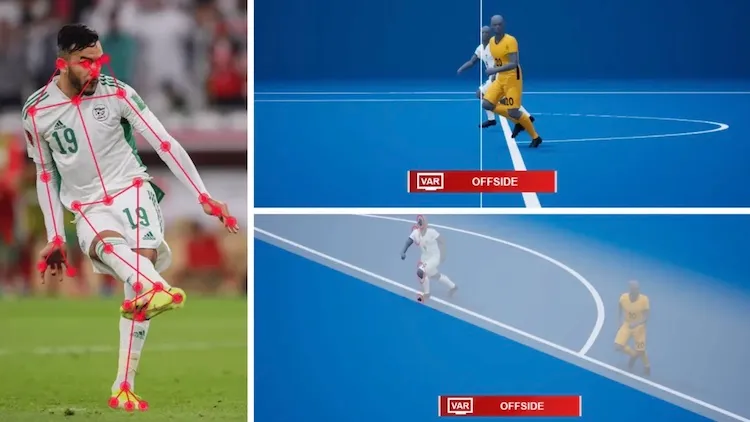
For decades, the offside rule has been one of the most debated and controversial aspects of football. It has decided matches, sparked outrage, and challenged referees in ways few other rules have. In response to growing criticism and the demand for fairness, FIFA has introduced semi-automated offside technology, a cutting-edge system that combines artificial intelligence, advanced cameras, and real-time data processing. Its goal is simple: to help referees make faster and more accurate offside decisions, while still keeping human judgment at the core of the process.
This technology relies on up to twelve tracking cameras mounted around the stadium, which capture 29 data points on each player’s body, multiple times per second. When a forward pass is made, the system instantly analyzes whether any attacker was offside based on their position relative to the second-last defender. It considers only the parts of the body relevant to scoring a goal, such as the head, torso, and feet. A 3D animation is generated within seconds, showing the exact positions at the time of the pass. This animation is then reviewed by the VAR team and relayed to the on-field referee for the final decision.
The key difference between traditional offside calls (with VAR) and the new semi-automated system lies in speed and objectivity. Previously, video referees had to manually freeze the frame, determine the moment of the pass, and draw virtual lines – a process that could take over a minute and was subject to human error. With the new system, offside decisions are made almost instantly, reducing interruptions and delivering a much higher level of precision. This not only improves the flow of the game but also reduces the emotional toll of long, uncertain waiting periods for players, coaches, and fans.
Still, some football purists express concerns about the game’s increasing reliance on technology. Does semi-automated offside remove the “human” side of football? While it brings fairness, it also introduces a strict, millimetric interpretation of the rule that can feel harsh—especially when a player is marginally offside without gaining a real advantage. Yet in a sport where the stakes are higher than ever and pressure on referees is enormous, this innovation represents a necessary balance between fairness, speed, and entertainment. Football, a game driven by emotion, is quietly stepping into a new technological era.
